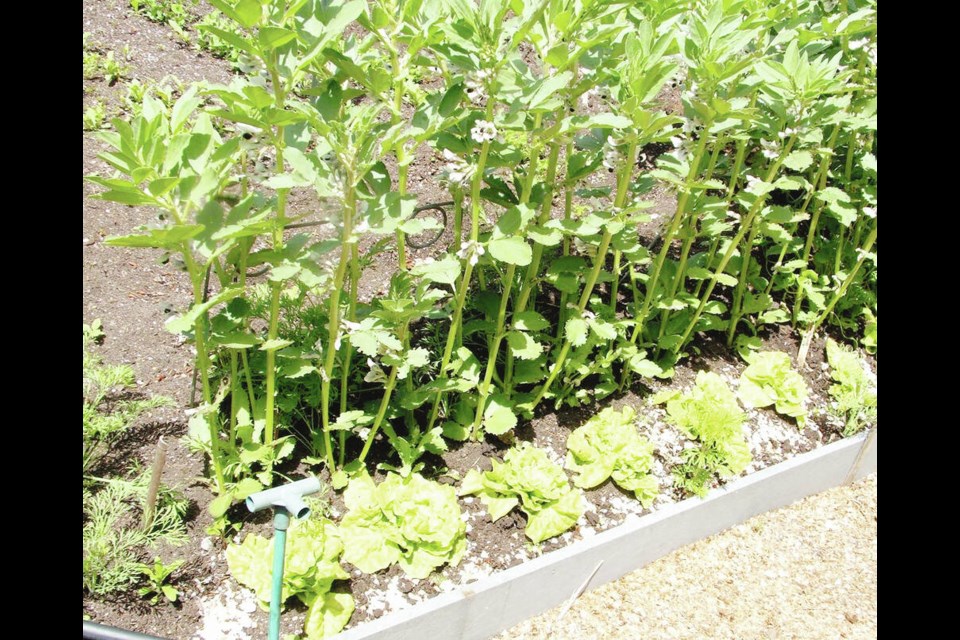Dear Helen: We have just begun to grow baby lettuces and Swiss chard for the winter, under the lights of our three-tier indoor gardening system. We would like to expand the garden to include more edibles for winter food. Are carrots a possibility? We are not fans of kale.
K.M.
With an indoor growing system like yours you should be able to grow most compact vegetables and herbs. Many kinds of microgreens and blends of mixed greens are available from most seed sources. West Coast Seeds lists a blend of red and green lettuces in their “City Garden” mix of baby greens.
Most seed sources also have baby carrots — ones with round roots and others that grow short, slim “fingerling” roots like Baby Spike from T& T Seeds. Baby Spike’s roots are six to 10 cm long. T&T also lists a Rainbow Baby Lettuce Mix.
More possibilities include small bush zucchini, dwarf bush cucumbers and compact (patio) tomatoes. William Dam Seeds and Renee’s Garden list Mascotte, a bush bean bred in France for containers.
You can grow spinach, small-leaved basil, pea shoots and compact (pot) cilantro in winter under lights.
In the list of vegetables on the Renee’s Garden website you’ll find a Container Variety Sampler with varieties that may appeal to you. Go first to “Shop Our Catalog” to find the lists of vegetables, herbs and flowers. You could also click on a vegetable you’d like to grow under lights. You may find a miniature form of that vegetable. For example, under Asian Vegetables you’ll find Mini Pak Choi Green Jewel (10 cm high) You can do the same with any catalogue’s list of vegetables.
Dear Helen: I’ve been enjoying hibiscus flower tea from a local health food store. Can the plant that produces the flowers for tea be grown in our gardens?
H.M.
Yes. I have found two seed sources for the plant: Hibiscus sabdariffa. I’ve not grown it yet, but I do drink the tea often. It’s become the favoured post-dinner tea with my pot luck group. I often have a litre bottle of it, lightly sweetened with honey, in the fridge for a refreshing drink.
Renee’s Garden (reneesgarden.com) lists the seeds with the herbs, describing the plant as growing 60 to 90 cm high and having attractive lobed leaves and creamy flowers. When the blooms have faded, they are gathered for the teardrop-shaped flower calyxes left after the petals fade away.
The bright red calyxes are dried indoors for a week to 10 days before being stored. They make a tasty ruby-coloured tea.
There is a photo of the calyxes on the website of Truelove Seeds, which lists Hibiscus sabdariffa as “Doc’s North Florida Roselle” and describes it as an earlier producer of flowers than most strains. Both Renee’s and Truelove are American companies that ship seeds to Canada.
Dear Helen: During the pre-Christmas freezing weather, I went into the garden hoping to gather kale for dinner. When I found the leaves frozen hard, I wasn’t sure whether I should be picking them at that point. What is your opinion?
C.A.
Wait until temperatures rise above freezing and the kale foliage returns to normal before picking. Letting the plants regain their normal processes will ensure a picking of kale that will deliver its usual, desirable texture and flavour.
Dear Helen: How is “insect netting” different from the more familiar floating row cover fabric I use to cover my cabbage and broccoli as protection against cabbage root maggot flies and cabbage butterfly caterpillars?
S.P.
Floating row cover (horticultural fleece, Remay) used as protection from insects is an gauze-like, extremely lightweight spun polyester fabric that is placed directly over seeded beds and plantings and anchored securely into the soil around the plantings to exclude insect pests. It also gives some protection against cold temperatures.
Insect netting such as ProtekNet is a durable, knitted poly fabric that allows free passage of air through to covered plantings. It does not gather warmth around the plants. The netting should be supported on hoops or smooth frames over vegetable plantings, but it can be used to cover fruiting bushes and small trees without any supporting framework.
With care, insect netting lasts for many years. Floating row covers usually last for two, maybe three years.



